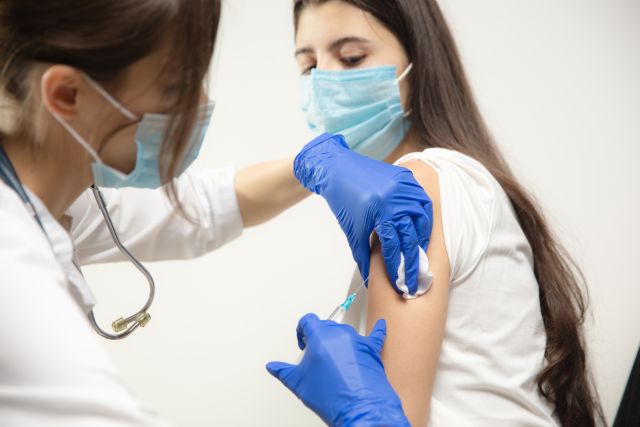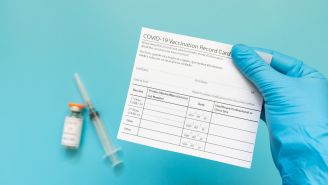Updated on June 18, 2022.
Roughly one year after Moderna asked the U.S. Food and Drug Administration (FDA) to greenlight its COVID vaccine for older children and teens, the agency authorized the two-dose regimen for all kids ages 6 to 17 years old.
Until now, only the Pfizer vaccine was available for children in this age group. Health officials were concerned about a possible increased risk for heart inflammation following the Moderna vaccine, particularly among teen boys and young men. But close monitoring since May 2021 did not show significant differences between the two vaccines among men ages 18 to 25.
The FDA’s decision follows the unanimous recommendation of its advisory committee, which found the vaccine’s benefits outweigh any possible risks.
Commonly reported side effects of the vaccine were pain at the injection site, fatigue, headache, chills, muscle aches and nausea. In the Moderna trials, there were no confirmed cases of two types of heart inflammation, called pericarditis and myocarditis, among the children in these age groups. The risk for these conditions is also greater following COVID infection than vaccination.
The Centers for Disease Control and Prevention (CDC) approved the FDA’s decision one day later, making the Pfizer and the Moderna mRNA COVID vaccines available to all children ages 6 months to 17 years old.
Results from the teen trials
Results of Moderna’s late-stage trails found its COVID vaccine had an efficacy rate of about 77 percent for kids between 6 and 11 years old. The vaccine had an efficacy rate of about 93 percent for those between 12 and 17 years old.
Older kids and teens receive the same 100-microgram dose per shot as adults. Younger kids ages 6 to 11 receive two 50-microgram doses, and kids age 5 and younger receive 25-microgram doses. For all people, the second Moderna shot is given one month after the first.
Moderna’s trial data was collected before the rise of the Omicron variant. The FDA panel noted that health officials should monitor the situation and consider the possible need for an additional dose to bolster protection against current and future variants.
Is Moderna’s vaccine safe for teens?
The Moderna vaccine was well-tolerated among children and teens, with mostly mild side effects similar to those experienced by adults who received the shot. The most commonly reported complaint after the first dose was pain at the injection site. After the second dose, the most common side effects were headache, fatigue, muscle pain and chills.
All young people included in the Moderna trial will continue to be monitored after receiving their second dose of the vaccine. Researchers will not only be analyzing the long-term safety of the shots but also tracking their immunity to COVID over time.
Health officials hope that giving parents and guardians another option may help jumpstart stalled U.S. vaccination rates. The Pfizer COVID vaccine has been approved for children age 5 to 17 for more than a year but as of June 8, 14.8 million kids and teens age 12 to 17 are fully vaccinated, representing about 59 percent of this age group. And 8.2 million kids between 5 and 11 are fully vaccinated, accounting for about 29 percent of this age group.
This leaves about 26 million school-aged children unvaccinated against COVID.
How the vaccine works
The vaccine candidate, mRNA-1273, is an mRNA vaccine. Traditional vaccines for viruses are made from a weakened or inactive virus, but Moderna’s vaccine is not made from SARS-CoV-2, the coronavirus that causes COVID.
Instead, it works by delivering pieces of genetic material that carry instructions for making the COVID spike protein, which is the protein the virus uses to infect cells.
The genetic code, or mRNA, is packaged inside a slippery coating that allows it to slide into cells and tell them to make the spike protein. This prompts a protective immune response.





